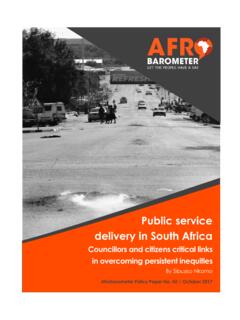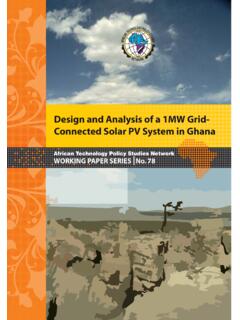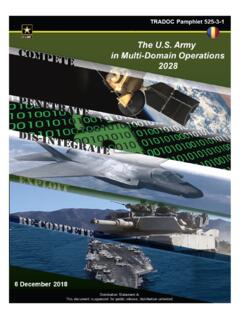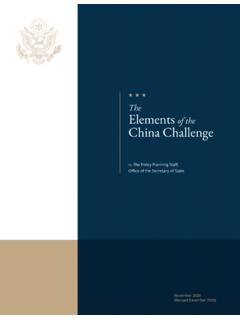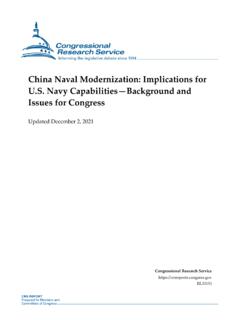Transcription of Agricultural & Rural Transformation in Ethiopia
1 Agricultural and Rural Transformation in Ethiopia Obstacles, Triggers and Reform Considerations Policy Working Paper 01/2020 Getachew Diriba January 2020 Addis Ababa, Ethiopia ISBN 978-99944-54-72-3 Agricultural and Rural Transformation in Ethiopia Policy Working Paper 01/2020 ii Table of Contents 1. 1 2. Challenges of Agricultural and Rural Transformation in 2 A Brief Overview of Ethiopian Agricultural Policies and Programs 2 Obstacles to Agricultural and Rural Transformation in Ethiopia 5 The Rising Tide of Hunger and 6 Input and Output 8 8 Property Right 10 Organizational Inefficiencies and 13 Fearful of the Creative 14 The Agriculture and the Environment 16 Agricultural Growth without 17 The Crop 17 The Livestock 21 3.
2 Framing the Processes of Agricultural and Rural 28 Conceptualizing Agricultural and Rural 28 Agricultural and Rural Transformation in Development Literature 33 Triggers of Agricultural and Rural 37 4. A Call to Action: Incentives and Reform 40 Quadruple Sector Approach to 40 Sustained and Intergenerational Commitments to Transformation . 42 Legal and Regulatory Environment to Facilitate 45 Decisive Agricultural Mechanization and Access to 46 Decisive Private Sector Lead in Agricultural and Rural 47 Effective and Accountable Organizational 48 Accessible Rural and Agricultural Financial, Credit Services and 49 Environmental 50 51 Agricultural and Rural Transformation in Ethiopia Policy Working Paper 01/2020 iii List of Tables Table 1: Number of Holders by Land size (ha) - 2014 12 Table 2.
3 Cattle Holding Size in Main Crop Growing Areas by Region, 23 Table 3: Livestock ownership in Pastoral Areas, 2014 24 Table 4: Total Livestock Resources of Ethiopia , 2014 25 List of Figures Figure 1: Emergency and Safety Net Program Beneficiaries: 1978 7 Figure 2: Value of Imported Cereals, Dairy Products, Edible Oil and Cotton, 1993- 2016 (USD) .. 7 Figure 3: Selected Crop Yield/ha: 1979/80 - 2017 18 Figure 4 : Selected Pulse Crop Yield/ha: 1979/80 - 2017 20 Figure 5: Selected Oil Seeds Yield/ha: 1979/80 - 2017 21 Figure 6: Processes of Agricultural & Rural Transformation : Triggers, Indicators & 30 Acronyms mt metric ton ha hectare hg hectogram MOA Ministry of Agriculture SDG Sustainable Development Goals 2030 USD United States Dollar Agricultural and Rural Transformation in Ethiopia Policy Working Paper 01/2020 1 1.
4 Introduction1 We can do anything we want provided we can find a way. We are constrained by nothing except our own ignorance. Plagues and droughts have no cosmic meaning but we can eradicate them. Wars are not a necessary evil on the way to a better future but we can make peace. No paradise awaits us after death but we can create paradise here on earth and live in it for ever, if we just manage to overcome some technical difficulties. Yuval Noah Harari, Homo Deus, A Brief History of Tomorrow, 2015: 200 This discussion paper assesses the state of Agricultural and Rural conditions of Ethiopia ; describes the extent, speed and depth of Agricultural and Rural Transformation ; and provides policy options for the relevant parties.
5 It is premised on the progress Ethiopia has registered in social, economic and infrastructural development, as well as on policy experimentation over past decades. On average, Ethiopia s economy has been growing at 10% per annum over the past decade. Progress has also been made in expanding Rural and urban roads, from 19,000 km of roads in 1990 to 121,171 km in has also registered a gross educational enrollment ratio of million in 2015/16 of which million (some ) graduate each year expecting to join the labor force (MOE 2016). The number of students in various levels of educational establishments is very large, and it is equivalent to, for example, the entire population of Madagascar, or the combined population of Togo, Sierra Leone, Libya and Swaziland.
6 Notwithstanding the continuing need to enhance quality of education, this is a great success story of educational expansion. The vast expansion, however, represents massive demand for jobs across all sectors of the economy. During the past decades, in aggregate, poverty has declined, in monetary terms, from in 1995/96 to in 2015/16. By contrast, the multi -dimensional poverty index2 remains at with intensity of deprivation at , according to the 2019 Human Development report. The share of food in household expenditure has fallen from 60% in 1995/96 to 55% in 2015/16 (the National Planning and Development Commission 2018).
7 The Ministry of 1 The discussion paper is abridged from the author s book: Overcoming Agricultural and Food Crises in Ethiopia : Institutional Evolution and the Path to Agricultural Transformation . The first edition was published in 2018 at the Master Printing, Addis Ababa, Ethiopia , and Amazon, USA 2018. The second edition will be published later this year. 2 The Multidimensional Poverty Index (MPI) identifies multiple deprivations at the household and individual level in health, education and standard of living Agricultural and Rural Transformation in Ethiopia Policy Working Paper 01/2020 2 Agriculture reports3 that agriculture contributes billion dollars or to the GDP, employs some 79% of the population, accounts for 79% of foreign earnings, and is the major sources of raw material and capital for investment and market.
8 Furthermore, the Ministry plans to increase wheat productivity from in 2019 to 4 mt/ha by 2023 and reduce wheat import from million mt in 2019 to zero by 2023. The MOA envisages achieving this by acid soil and vertisol management, intensification, expanded use of irrigation, mechanization, and private sector partnership. Meanwhile, Ethiopia s population is estimated at million accounting for of the world population; it now ranks number 12 in the list of countries by population, according to an online Worldometers world population data. The population under the age of 29 years accounts for 69% or 76 million people with median age of years, and million people ( ) urban population.
9 It is expected to increase by per year reaching 136 million people in 2030. During the same period, the economy is forecast to grow, on average, by around 7%. 2. Challenges of Agricultural and Rural Transformation in Ethiopia A Brief Overview of Ethiopian Agricultural Policies and Programs Ethiopia s Agricultural modernization was conceived at the turn of the 20th century by Emperor Menelik II (1889-1913) who had had a voracious appetite for modernization : he initiated modern housing, eucalyptus tree planting to mitigate urban firewood demand, introduced irrigation, built a railway system, and established key ministries including the Ministry of Agriculture.
10 Emperor Haile Selassie I (1930-1974) expanded Menelik s vision of modernization but both emperors were hindered by the lack of organizational, human and other capacities (see Diriba, 2018). It was only from 1960 onwards that modest progress was recorded following the establishment of Agricultural high schools and colleges with the support of USAID s Point 4 Program. Subsequently, a series of bilateral and multilateral technical assistance plans were offered to develop agriculture, including the creation of a Comprehensive Agricultural Package Program, the establishment of an Extension Program Implementation Department (EPID) within the Ministry of Agriculture, and other packages.
